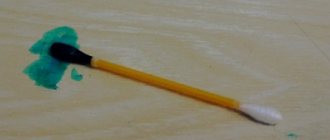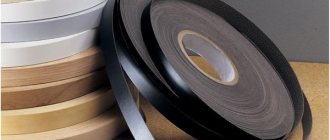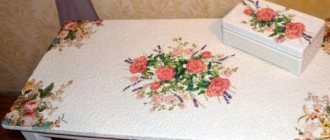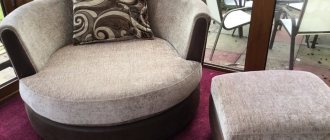The popularity of hand-made products is growing day by day, including do-it-yourself furniture painting. This exciting activity also brings practical benefits: with the help of painting, old pieces of furniture acquire a second life. But it is not at all necessary to engage exclusively in restoration. New simple furniture without any frills can be turned into a real interior masterpiece. The main thing is to choose the appropriate painting technique.
Types of painting
The choice of one or another type of painting primarily depends on skills and abilities:
- People who are not endowed with artistic talent can settle for simple decorative painting of furniture. It consists of applying small, simple ornaments or patterns to the surface. To simplify the process, paint of one shade is used, sometimes a ready-made stencil for painting furniture. This type of decoration is suitable for interior items in a modern or classic style. In the second case, gilding is often used, which gives the furniture a noble “palace” gloss.
- Artistic painting of any furniture is a more complex process. It requires from the performer not only drawing ability, but also patience. Painstaking work can consist of many stages, each of which is done by hand and includes careful drawing of details, mixing paints, selecting different shades, as well as the use of additional chemical compounds to create decorative effects. This type of painting can be a complex ornament or a real painting.
A separate type is artificial aging. The method is used when you want to give an object a touch of antiquity. This type of decor may include:
- patination;
- craquelure (cracking of paint);
- use of gilded paint;
- creation of artificial abrasions, dents, imitation of traces of damage by insects.
Whatever method is chosen, painting furniture is always an exciting process, which, with the right approach, will allow you to get an exclusive piece of furniture.
Decorative painting
Artistic
Patination
Craquelure
Gilding
Artificial aging
What furniture is it used for?
This type of decor is best suited for furniture made from natural wood that has never been painted or varnished. This material reacts well to paint, its textured surface prevents it from spreading, and the wood lends itself well to processing - sanding, creating additional effects. With the right choice of paint and varnish coatings, you can paint on furniture made of other materials - plastic, MDF with acrylic coating, glass or metal.
Compliance with all stages, which include surface preparation, direct painting and finishing with protective compounds, will allow you to preserve the design for a long time.
Decorating furniture with painting has a number of advantages:
- exclusivity - the opportunity to get a unique piece of furniture;
- saving money - using technology you can restore old furniture, turning it into a real masterpiece;
- the opportunity to show imagination and creative skills;
- bringing family members closer together - work can be done together with children, then it will turn into an exciting game.
Materials and sizes of adjustable furniture supports, operating rules
As for the type of furniture, it will be easier for beginners to work with the flat surfaces of tables, chairs and cabinets. After practicing, you can move on to more complex objects. If the furniture has different decorative elements, such as scrollwork or engraving, painting will take more time.
Natural wood
Plastic
MDF
Glass
Metal
How to decorate a table with stickers
Surely many of you have seen decorative vinyl stickers in stores intended for interior decoration. But who said that they can only be glued to walls? This method of decoration is the simplest and least expensive in terms of time and finances.
However, if you decide to choose this method, it does not mean that preparing the table surface can be neglected. It will also have to be sanded and primed, and maybe even painted, creating a certain background for the ornament. The selected elements are glued onto a dry and clean surface and carefully smoothed. If necessary, the decorated tabletop can be varnished.
Required materials and tools
The most important “participant” in the painting process is paint. Its correct choice for a certain material from which the furniture is made will achieve the desired effect. The most versatile paint is acrylic. It lays perfectly on any surface in an even layer, has no unpleasant odor, and dries very quickly. For painting on wood, regular gouache or watercolor is also often used.
The most popular way to decorate children's furniture is to use butterfly stencils.
Before applying paint, the object must be primed with a special compound that will fill all microcracks on the surface and level it. Varnish is used as a finishing coat. It will protect painted furniture from damage and help maintain the brightness of the colors for a long time. Among modern compositions, acrylic varnish is in demand. Moreover, it can be either transparent or tinted, which is appropriate to use when aging.
During work you will also need other tools and consumables:
- sandpaper with different grits (coarse - for use before applying primer and fine - for finishing and creating additional effects);
- brushes - it is better to have a set of flat and round brushes, large and small, for painting the entire area or drawing small details;
- roller - it is more convenient to use if you need to apply a background to a flat surface immediately before painting;
- a simple pencil and a ruler - for sketching and marking when forming an ornament.
Main types of furniture profiles, characteristics, application
This basic set will allow you to easily paint furniture yourself.
Decoration stages
Regardless of what material the furniture is made of, the main stages of painting will be the same:
- Prepare the surface using high-grit sandpaper. This will create rough spots that the paint will fill in, making it last longer.
- A primer is necessary to ensure that the paint goes on smoothly and does not crack or crumble over time.
- If necessary, apply background paint. Moreover, it is better to make a two-layer coating with thorough drying after each stage.
- Drawing a sketch of the image with a simple pencil (if a stencil is not used).
- The main stage is creating the drawing itself. If multiple shades are used, it is important to dry each layer.
- Finish coating with protective varnish. It is advisable to do it twice.
Only following the correct technology will allow you to create furniture with a pattern that will not fade or lose its attractiveness even after many years.
Creating a Sketch
Choosing a design or design can be quite a difficult process. Hand-painted furniture itself can look very original and, of course, will be a unique item. But the main thing is that it fits harmoniously into the interior. Therefore, first of all, you need to build on an already existing style.
The simplest drawings to perform are:
- geometric ornaments and patterns;
- butterflies, for drawing which it is advisable to use stencils;
- abstractions in the form of circles, squares or curls;
- vegetables and fruits - suitable for painting kitchen furniture.
Today, the use of ethnic motifs in the interior is very important, so you can opt for national ornaments. But, most likely, drawing such a drawing will require artistic skills from the author. For example, painting furniture in the traditional Russian style can refer to folk crafts from different regions of Russia. These include such recognizable Russian paintings as Khokhloma, Gzhel, Zhostovo, Palekh and Gorodets.
To create a sketch, you can print a suitable drawing on paper of the required size and transfer it with a simple pencil to the surface, observing the proportions. The easiest way is to use ready-made or self-created stencils and templates, which are suitable for painting not only furniture, but also walls.
Preparing the structure
How long an object with an image printed on it will remain presentable and the colors will remain bright depends on the preparation. If new furniture is to be used, the preparation process only includes sanding the surfaces with sandpaper and priming.
Functionality of furniture aluminum profiles, subtleties of choice
If the product has already been used, preparation will take longer. The surfaces need to be processed more thoroughly with sandpaper to remove all dirt and old paintwork. It is also necessary to inspect the furniture for cracks and nicks. To eliminate the former, you will need a special putty, and nicks can be removed by careful sanding with sandpaper. As a result, the surface should be absolutely smooth and even.
Grinding
Primer
painting
The choice of paint is very important. After the sketch is approved, it is necessary to select the full palette of colors that are present in the drawing. If acrylic paint is used, it will be much more convenient and economical to buy different colors, which are mixed into the main white composition in order to obtain the desired shades.
The painting process itself can take a couple of hours or several days. For example, if you use stencils and spray paint, applying the design will be easy. It is only important to secure the stencil to the surface so that it does not “move” during the process of spraying paint. If the image is complex and includes many shades, before applying each layer it is necessary to allow the previous one to dry thoroughly.
The decoupage technique is quite simple to implement. The method of applying an image in this way involves the use of napkins with a beautiful pattern. Moreover, if the paper is three-layer, only the top layer is left, which is transferred to the furniture surface using PVA glue. If necessary, additional elements are drawn.
Consolidate the result
This step is mandatory. If the applied pattern is not fixed to the furniture, even the most durable paints will eventually wear off or fade under the influence of sunlight. To fix the result on surfaces of any material, it is most convenient to use colorless acrylic varnish. The composition is applied to the furniture in an even layer using a brush. It is important to ensure that there are no smudges or drops. It is better to varnish twice - since acrylic varnish dries very quickly, it will not take much time.
Hand-painted furniture will become a truly exclusive piece of furniture. As you improve your skills, you can gradually move from simple drawings to more complex ones, mastering new techniques.
Decoupage
The name of the technique itself is translated from French découper - “cut”. It consists of attaching (gluing) a cut-out design, ornament, or painting to an object. Then the decorative layer is varnished to ensure the durability of the pattern.
To decorate a table using the decoupage technique, you can use various elements:
- old newspapers, books, music notebooks;
- wallpaper remnants;
- patterns and ornaments cut from disposable paper napkins;
- family photos;
- pictures cut out from magazines;
- pieces of fabric.
The prepared surface of the table is covered with PVA glue and the necessary elements are laid out. Using a rubber roller or plastic spatula, smooth the surface, removing bubbles. After the glue has dried, coat it with several layers of varnish.
You can apply the ornament on top of a painted table, and sand the edges, creating a worn effect. This table will look original in a Provence, country or shabby chic room. But this is only true for wooden furniture.
You can also decorate a coffee table using the decoupage technique by choosing a lace pattern for the tabletop.











